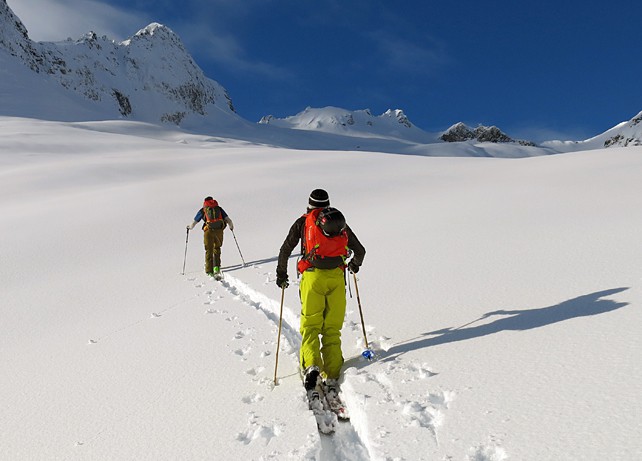
Pete Miles is an instructor with the British ski school New Generation in Courchevel – and loves ski touring. Here he lays out five simple steps that that will launch you into a lifetime of touring.
Ski touring is not for everyone. The idea of walking up your mountains as well as skiing down them appalls some people. “Why work yourself up into a sweat,” they’ll ask you, “when there are lifts all over the mountains which can do the job for you?”
Long may their hostility continue: because it leaves more room for the rest of us. As a result, you can always find a patch of mountain wilderness to escape into. It could be just above the top of a resort’s lift system, or squirreled away in the Sunnmøre Alps of Norway. But wherever it is, the sense of self-reliance and wonder that comes from ski touring can quickly become addictive.
Here’s how to get started.
1. Don’t wait till you’re an expert
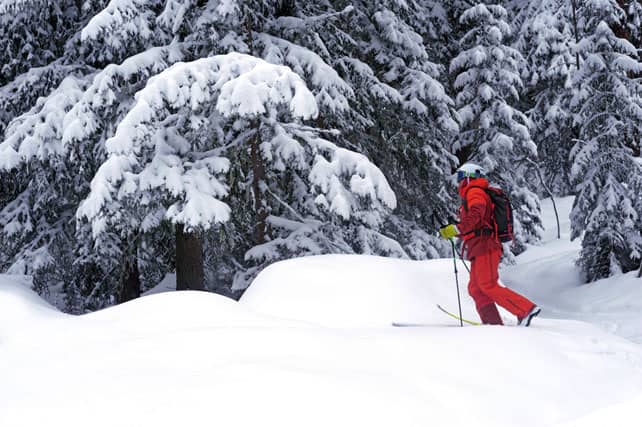
You don’t have to be an expert to go ski touring. Over the last decade there’s been a huge growth in the popularity of the sport (in France alone there are thought to be 150,000 active ski tourers); and ski resorts are responding by developing uphill trails which connect with their piste networks.
The French resort of La Plagne did this a couple of winters ago – so you can now skin up an easy 3-4km route from Belle Plagne to the Col de Forcle, and then ski back down on gentle blue pistes. Other resorts have offered this kind of interconnectedness for longer. In the Alpbachtal in Austria, you can hire a guide, and follow touring route 66, through farmland and forests, to the summit of the Wiedersberghorn. The climb should take 2-3hrs, and at the top, you can choose: ski off-piste, or follow the red and blue pistes back down to the valley.
Meanwhile, in Courchevel, we’ve got two dedicated touring routes that are secured against avalanches and link in with the piste system. Both start in Le Praz – with one heading up to Courchevel 1850, and the other climbing to the Loze.
Those who can already ski off-piste a little, but can’t handle really steep slopes, trees, or couloirs, should get stuck in too. Ski-touring guides will know of plenty of easy off-piste descents to which you can hike. Just be honest about the terrain you can handle when you’re discussing possible routes, and you’ll have a ball.
2. Don’t fret about your fitness
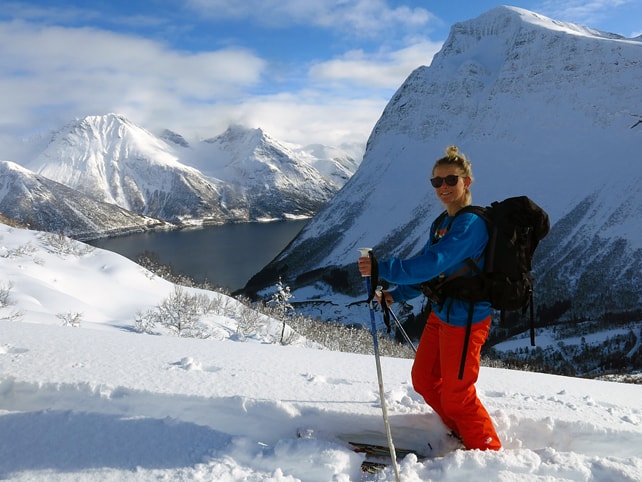
If you’re overweight, lead a sedentary lifestyle, have heart problems and/or drink/smoke then get advice from your doctor about the wisdom (or not) of ski touring. But for the rest of us, touring needn’t be a severe test of our physical limits. After all, it’s not much different from hiking, with a bit more kit on your feet.
You’ll need to concentrate more on your balance than usual, and master the kick turn when you change direction on steep snow. But if you can walk up a mountain in boots or trainers, and can manage a conversation while you go, you can go ski touring.
For most people, a fun day out would involve no more than three hours of uphill, followed by a descent tailored to their skiing ability. But when you’re a beginner, an hour or two of climbing is plenty.
3. Learn to love lightweight kit
You’ll need to adjust your mindset when it comes to touring kit. Not only does touring require detachable skins for the underside of your skis. You need different boots, bindings, and (ideally) different skis, too. There’s a good introduction to the basic set up here:
ARVE Error: For the maxwidth (maxw) option you need to have normal or lazyload mode enabled, either for all videos in the plugins options or through shortcode e.g. [youtube id=123456 mode=normal maxw=999 ].
But at this stage in your career it’s good to know you can rent touring gear in most big resorts. There’s no need to buy anything just yet!
The same goes for avalanche safety gear. This is absolutely essential if you’re leaving the safety of the pistes. But in the early days of your career you’d be nuts to venture off-piste without a guide/instructor (see below): he/she will either provide this kit or help you rent it.
When it comes to ski-touring bindings, my own preference is for an integrated Dynafit Tech (or pin) binding. This uses small ball and socket-type pivots between the toe piece and binding, allowing the heel of the boot to lift freely, without lifting the rest of the binding. It’s important to get boots designed to work with this system, so there are no issues with compatability or fit.
ARVE Error: For the maxwidth (maxw) option you need to have normal or lazyload mode enabled, either for all videos in the plugins options or through shortcode e.g. [youtube id=123456 mode=normal maxw=999 ].
You’ll need to rethink clothing, too. Being hot and sweaty is a fact of life when you’re touring. Eventually, you’ll need a good-quality base layer, a thin outer shell with masses of ventilation, and ski trousers with full length zips so they can be removed on really hot spring tours. A lightweight down jacket in your pack is all you’ll need to stay warm at the top of the climb or when you start skiing.
Wildsnow.com is a great source of information about equipment.
4. Sign up for a proper course
Don’t go floundering about on your own. For starters, there’s the avalanche risk to consider. Join a qualified guide or instructor instead, and your progress will be hugely accelerated – as well as being much safer. At New Generation, we offer Intro to Ski Touring courses as part of our Backcountry Skills clinics, spread over two days, which cost €149pp for groups of 2-6 skiers.
On a beginner’s course you can expect to learn:
*How to put attach the grippy, sticky skins on the underside of your skis
*How to look after your skins and keep them working properly
*How to use the bindings and trouble-shoot common problems
*An efficient walking technique
*Route planning and route-finding
*An introduction to avalanche awareness, and rescue skills
*What to pack, and what not to pack. For example, it’s a common mistake for first-time tourers to take too much water! If you are fit and well hydrated before you start, you’ll only need a litre for a half-day tour.
You can turn your ski-touring training into an entire holiday by joining a beginner’s touring course – or join a day or half-day sampler in the middle of an ordinary ski holiday.
5. Get set for some big adventures
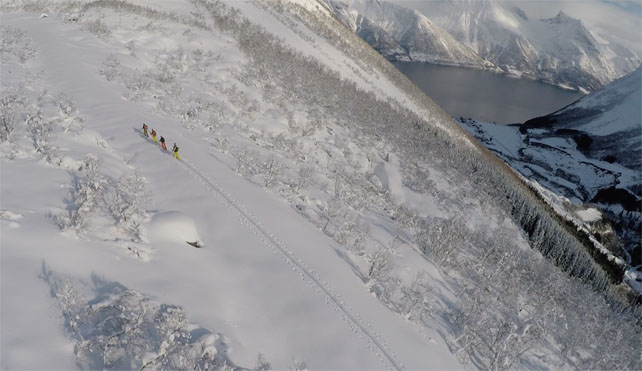
The sense of adventure kicks in the moment you turn your back on a lift system. So even if you’re just learning on the fringes of somewhere like Courchevel, you’ll get an almighty buzz.
Then, once you’ve built up your skills and fitness there are tours all over the Alps to try – the most famous of which is the magnificent, seven-day Haute Route from Chamonix to Zermatt. Pistehors.com is a great source of information on ski-touring routes in the Alps.
But in my book the real beauty of touring is being able to explore entirely new regions, away from modern ski-industry infrastructure. Here’s a little video we shot a couple of winters ago in the Norwegian fjords to give you a taste of the landscapes waiting for you to explore…
ARVE Error: For the maxwidth (maxw) option you need to have normal or lazyload mode enabled, either for all videos in the plugins options or through shortcode e.g. [youtube id=123456 mode=normal maxw=999 ].


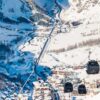
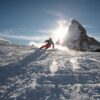







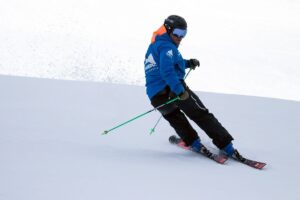
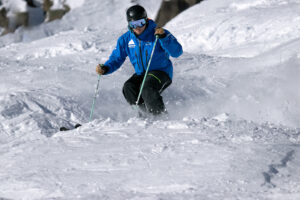


Add Comment